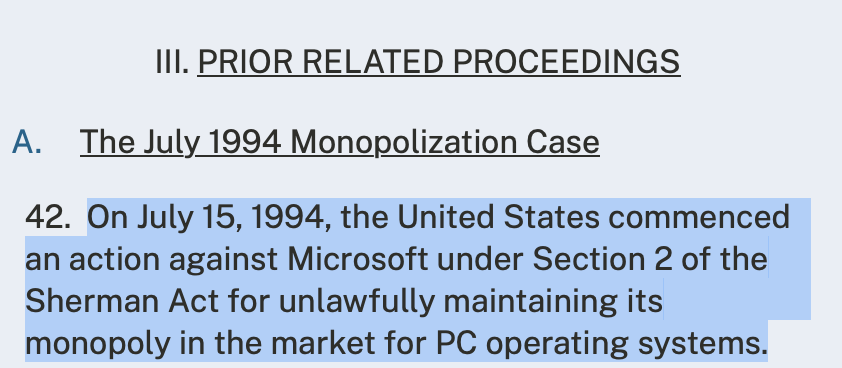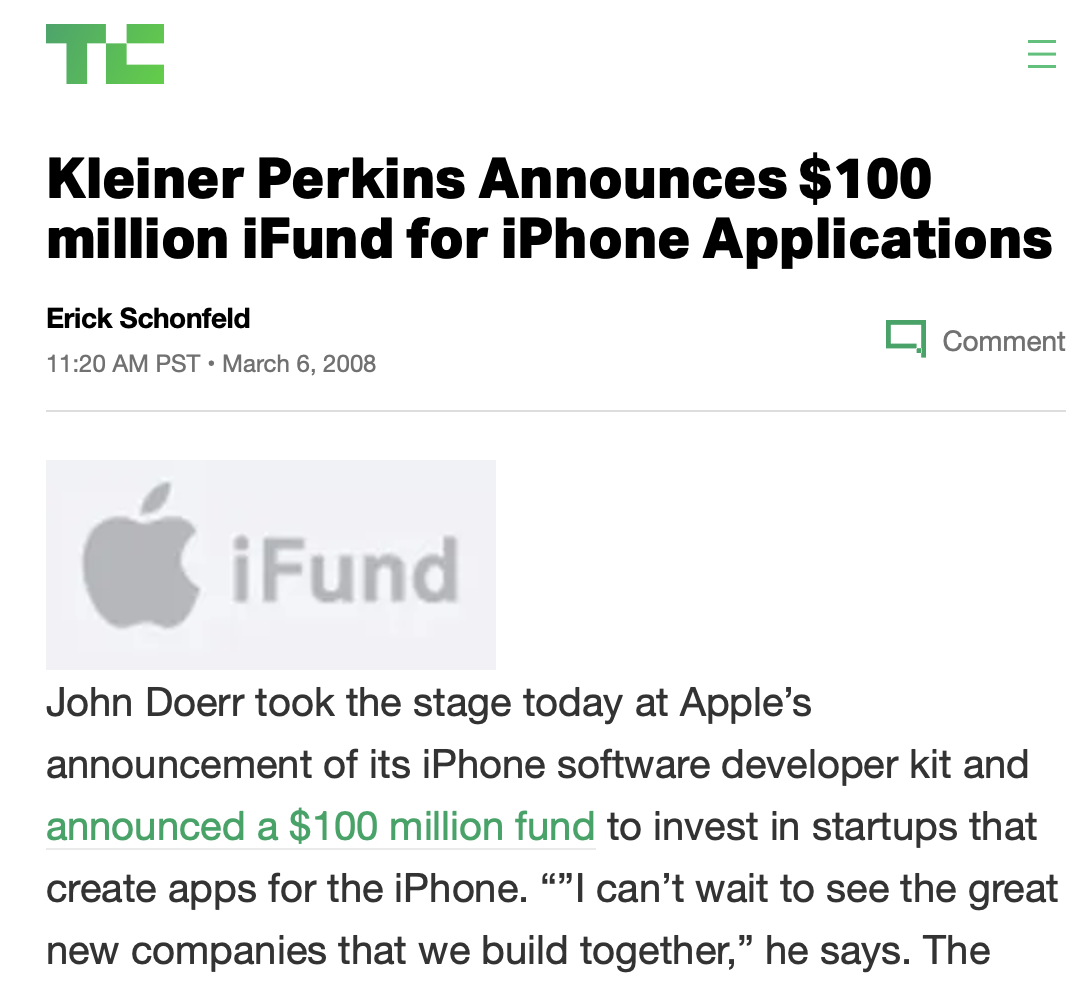New application platform markets emerge approximately once every 15 years. Once the market leaders are established, they tend to dominate for decades.
A new competition has commenced for the next app platform market: spatial computing.
This article examines previous market battles from the perspective of Apple, a veteran of two prior market battles, and how Apple is preparing for the upcoming battle against significant competition.
The Veteran
Over the last 40 years, Apple has created only 2.5 major platforms: macOS, iOS, and iPadOS (a variant of iOS). watchOS and tvOS are primarily products with limited platform ecosystems.
Now, Apple wants to create its third major platform in four decades: visionOS.
Will visionOS become the next iOS or the next AmigaOS?
Platforms
A platform connects two parties, such as a provider of a good or service and a consumer of that good or service. Examples of platforms include:
People looking for jobs and employers looking to hire (LinkedIn)
Individuals wanting to buy used items and those with used items to sell (eBay)
People who need a place to stay and those with a room to rent (Airbnb)
On some platforms, such as Threads and X, there is little distinction between producers (those who post content) and consumers (those who read or view content).
For most of these platforms, the primary value they deliver to their participants is facilitating connections. For instance, eBay can link a person who wants to sell an old comic book with someone who wishes to buy it, but eBay is not involved in the comic book’s creation.
On many platforms, the cost of joining is relatively low, making entry frictionless. For example, consumers might simply visit a website or download a free app, while producers upload text, photos, or videos.
A key feature of platforms is the network effect. The network effect means the platform’s value to each participant increases as the number of participants grows. This often leads to “winner take all” or “winner take most” outcomes, where a larger, more active platform attracts more participants, thus becoming more valuable and squeezing out smaller competitors.
Why app platforms are different
App platforms like macOS, Windows, and Android share many traits with other platforms, such as network effects, but there are significant differences.
One key difference for app platforms is the high cost of joining. Consumers need to purchase hardware (i.e., a computer, phone, or game console) that typically costs hundreds or thousands of dollars. Producers need to learn how to develop for the platform and then invest months or years in developing each app.
Another key difference is that the app platform provider does considerably more than simply connecting participants, as in the used comic book example above. App platform providers create a substantial portion of the functionality that developers utilize in their programs.
For example, the visionOS app I am working on will likely take me 3-6 months to create, but the code I write will probably represent only 1-5% of the total code executed in the final product. Apple, the platform provider, supplies the other 95-99% of the functionality/code through software development kits (SDKs) and core operating system features.
App Platform providers invest tens of millions to billions of dollars annually to enhance their platforms. This massive investment is reflected in Apple's biggest event of the year, the Worldwide Developers Conference (WWDC). While most people focus on the WWDC keynote event, WWDC includes over 100 specialized sessions introducing developers to new or improved functionality. These sessions are followed by months of large-scale beta testing of these new capabilities before they are finally rolled out to consumers.
If a company wants to introduce a new smartphone platform, it would be competing not with Apple’s initial iPhone platform of 2008 but with the iPhone of 2008 plus 16 years of additional investment by Apple.
The combination of network effects (common to all platforms) and cumulative investments in capabilities for app platforms makes it very difficult for new entrants to penetrate a mature app platform market.
For example, 30 years after the US government first took legal action against Microsoft’s monopoly power in desktop computers, Microsoft still holds a 73% market share of desktop operating systems. Its closest rival, Apple’s macOS, has a mere 14% market share, and no other company has successfully introduced a new desktop operating system in decades.
Consider three major app platform markets: desktops, mobile, and game consoles. Only two or three platforms in each category have survived, and once these successful platforms were established, it has been nearly impossible for new entrants to gain meaningful traction. Here are the major platforms in each app platform market with the years each has been in the market:
Desktop: Apple Mac (40 years), Microsoft DOS/Windows (43 years)
Mobile: Apple iPhone (16 years), Google Android (14 years)
Game console: Nintendo (41 years), Sony PlayStation (30 years), Microsoft Xbox (23 years)
For an app platform to succeed in the long run in a new market, it is not about being the first to market but being one of the first to achieve both:
A critical number of participants (users and developers)
A critical set of functionalities to help developers create apps for the platform
A comment on fees
Pundits and regulators often debate the fees most app platform companies charge for goods sold by developers on their platforms. These analyses typically overlook two crucial factors. First, as mentioned above, app platform providers invest massively to create the functionality that developers build on. Of the total code executed by the CPU in an app created by a developer, typically only a small fraction is written by the developer; most is written by the platform provider. Second, in the nearly 50 years of app platforms (dating back to the dawn of personal computers and game consoles), only a single platform (DOS/Windows) has enjoyed significant, long-term success without charging these fees to developers. In its 43 years of existence, DOS/Windows has maintained a 70-95% market share, representing a significant monopoly. This dominance gives Microsoft the power to charge enterprises approximately $400 per user per year for the right to run Windows (and this does not include the cost of the user’s computer).
Any analysis is misleading if it does not acknowledge two critical points: (1) the massive annual investment by platform providers, which developers leverage to create their apps, and (2) in nearly 50 years of app platform markets, there has been only one instance of a platform achieving significant financial success without these fees.
Getting a head start in a new platform market
Often, a new app platform gains a significant head start in the market due to its heritage or special relationships. In the desktop market, Microsoft quickly rose to dominance because the world's largest computer company at the time, IBM, selected Microsoft’s operating system for its IBM PC. IBM's extensive salesforce then pushed IBM PCs into businesses globally. Microsoft cleverly retained the right to sell MS-DOS to other vendors, and in 1982, Compaq began selling a computer with MS-DOS, making it compatible with IBM PCs and jump-starting the ecosystem of "PC compatible" computers. A decade later, Microsoft achieved great success with Windows 3.1, partly because it was backward compatible with MS-DOS and its extensive collection of applications. Microsoft has dominated the desktop market since entering it in 1981.
IBM PC (1981) > MS-DOS on Compaq (1982) > Windows 3.1 (1992)
For Apple, the original iPhone benefitted from its ability to play consumers’ extensive song libraries created with the iTunes-iPod platform. Before the iPhone, the iPod held about 80% of the portable music player market share. iTunes itself benefitted from Napster pioneering the idea of downloading music and creating music libraries on computers.
Napster (1999) > iTunes (2001) > iPod (2001) > iTunes Music Store (2003) > iPhone (2007)
Furthermore, when Apple transformed the iPhone from a product into a platform in 2008, the primary SDK used to create apps, Cocoa Touch, was based on the mature Cocoa SDK for Mac OS X, which Apple inherited from its acquisition of NeXT Computer. This gave Apple’s iPhone a significant head start in smartphone functionality that it could offer to developers.
NeXT Cube (1989) > Mac OS X with Cocoa (2001) > iPhone SDK with Cocoa Touch (2008)
By the time Apple turned the iPhone into a platform, it was already a massive hit with consumers, so Apple did not need to work too hard to convince developers to build apps for the iPhone. To add further momentum, on the same day Apple released the iPhone SDK to developers, Kleiner Perkins announced a $100 million venture capital fund (iFund) for companies to create iPhone applications.
Most business analyses of past platform battles focus on aspects like “first mover advantage” or “open vs closed” approaches, often ignoring the substantial head starts some platforms had. As a result, the conclusions drawn from these analyses may not be entirely relevant.
The battle for spatial computing dominance
Today, major technology companies are striving to create the next significant new platform market: Spatial Computing.
Apple's entry into this emerging market is visionOS. However, similar to the desktop computer market in the 1980s, this space is crowded with competitors. Other major contenders aiming to establish themselves as leading platforms in this new category include Magic Leap, Microsoft with HoloLens, Meta with Quest, Varjo, ByteDance with PICO OS, Sony with its PSVR2, and Google.
Which of these app platforms will become the macOS and Windows of spatial computing and still be around 20-40 years from now?
Which of these efforts will turn out to be the equivalents of CP/M, AmigaOS, TRS-DOS, and Commodore 64?
It's too early to tell, but if I had to bet, I’d place my bets on Meta’s Quest and Apple’s visionOS.
Meta has a significant head start in attracting users, owns some of the most popular VR titles, and has been diligently creating tools for developers. Apple, on the other hand, has a considerable advantage with its SDKs, mature development environment, and compatibility with an extensive library of iPad apps.


